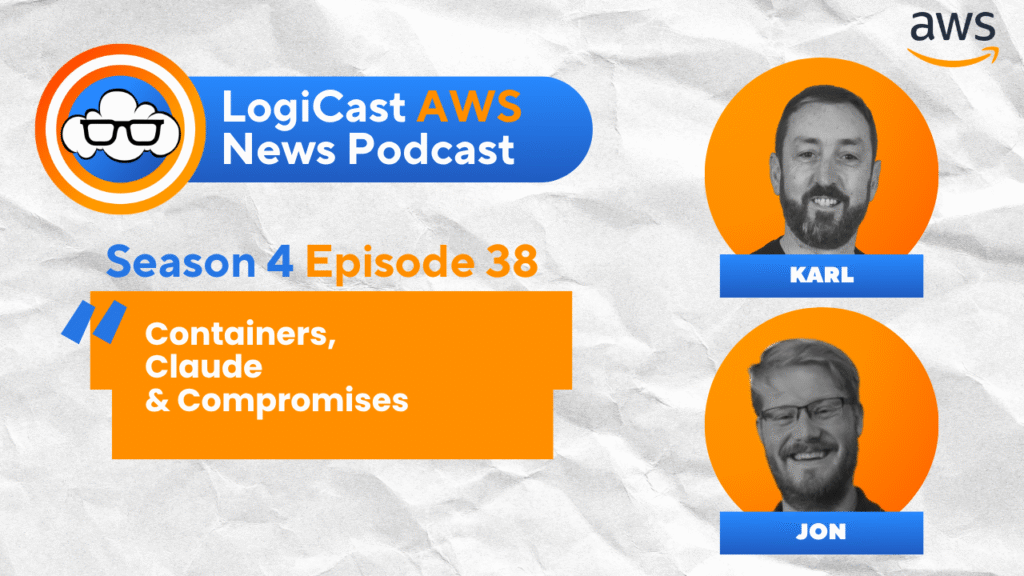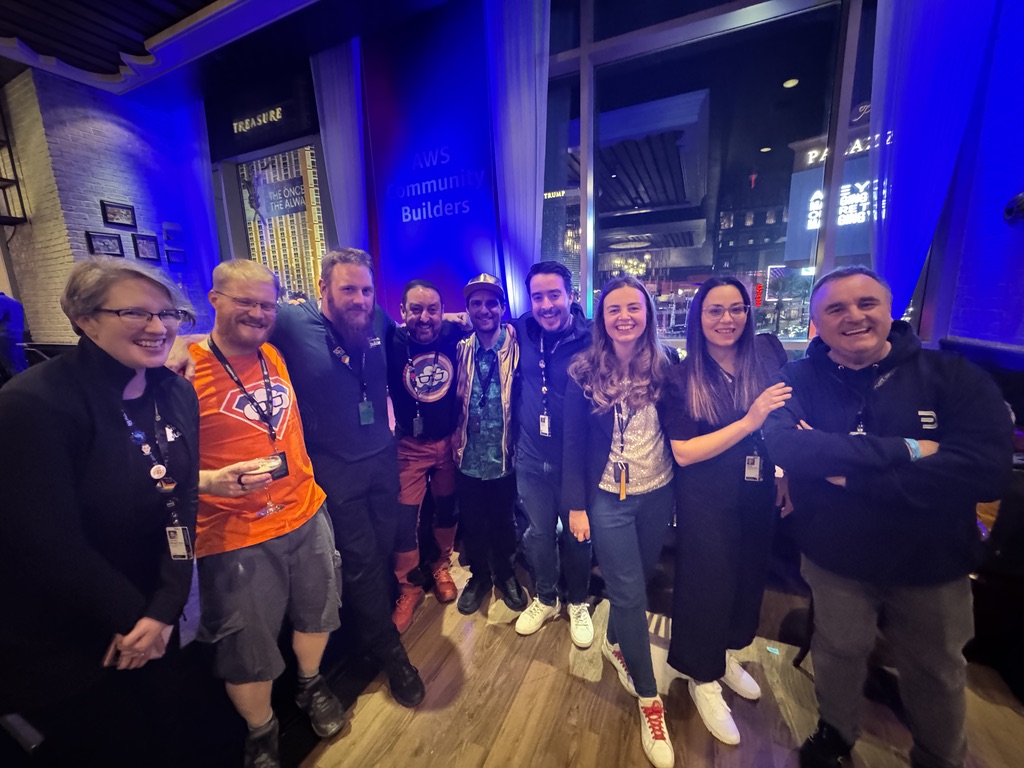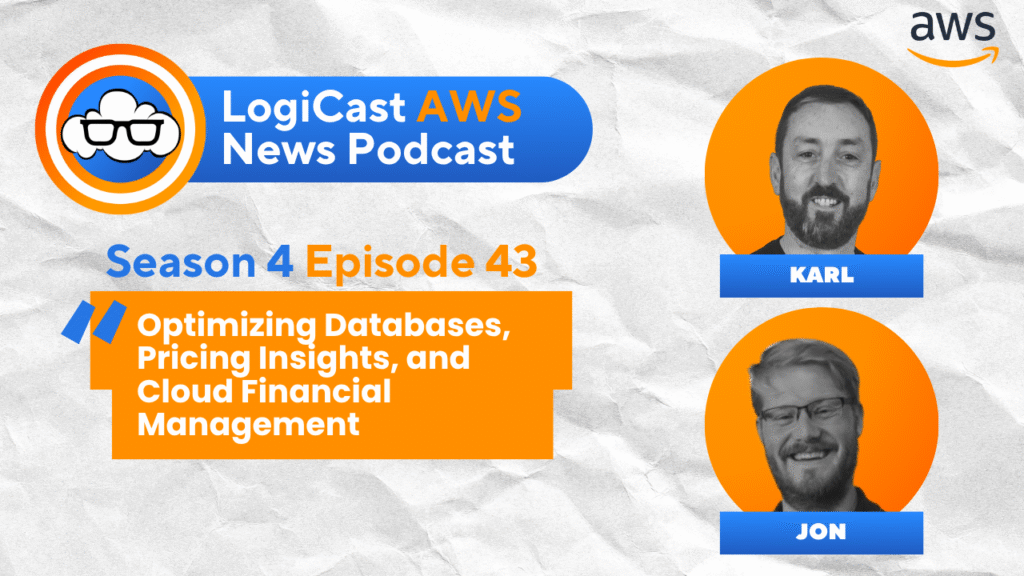
Logicata AI Bot
September 22, 2025
The Logicata AI Bot automatically transcribes our weekly LogiCast AWS News Podcasts and summarises them into informative blog posts using AWS Elemental MediaConvert, Amazon Transcribe and Amazon Bedrock, co-ordinated by AWS Step Functions.
In the latest episode of LogiCast, the AWS News podcast brought to you by Logicata, host Karl Robinson and co-host Jon Goodall were joined by special guest Neeraj Sharma, a fellow AWS Community Builder, to discuss recent AWS developments and industry news. The conversation covered a range of topics, from new AWS features to industry leadership recognition.
AWS Organizations Account State Information
The first topic of discussion was the new Account State Information feature for AWS Organizations. This update provides more granular information about account lifecycles, addressing previous limitations in account status reporting.
Jon explained that before this update, there were only three possible account states: active, suspended, or pending closure. This limited set of statuses often led to confusion, especially when managing account vending within organizations. The new feature introduces more detailed states, including:
1. Pending Activation
2. Active
3. Suspended
4. Pending Closure
5. Closed
6. Post-closure Period
7. Account Debt
Jon emphasized the importance of this update for organizations that frequently vend accounts, as it allows for more precise tracking of account statuses. He noted that this improvement could enhance automation processes and reduce the need for arbitrary wait times when activating new accounts.
Neeraj added that this update could have significant implications for compliance frameworks like PCI and HIPAA. He suggested that the more detailed account states could help organizations maintain better control over their account lifecycles and reduce risks associated with unclear account statuses.
Migrating from Claude 3.5 to Claude 4 on Amazon Bedrock
The conversation then shifted to the topic of migrating from Anthropic’s Claude 3.5 Sonnet to Claude 4 Sonnet on Amazon Bedrock. This update has implications for users of these language models within AWS environments.
Jon expressed frustration with the naming conventions of Claude models, describing them as “worse than the USB naming convention.” He highlighted the complexity of the various submodels and versions within the Claude family.
Jon also voiced concerns about the migration process, noting that it’s not as simple as changing a model flag. He mentioned that the outputs from the new model are different, requiring code changes and potentially affecting existing workflows. This could lead to increased costs due to changes in token usage and output formatting.
Neeraj agreed with Jon’s assessment, adding that the upgrade process is more complex than it might initially appear. He suggested that organizations should approach these LLM model upgrades more like application dependency upgrades rather than simple infrastructure changes.
Both discussants emphasized the need for testing and potentially re-engineering prompts when upgrading to the new model, as existing prompts may not work perfectly with Claude 4.
Guard Duty Protection Plans and Extended Threat Detection
The podcast then delved into AWS Guard Duty’s new protection plans and extended threat detection capabilities. Neeraj began by highlighting how these updates simplify some of the hidden complexities in security management.
Neeraj noted that one of the biggest challenges in security is correlation and dealing with false positives. He expressed optimism that the extended threat detection feature could help correlate different events and provide a clearer picture of potential security incidents.
Jon shared mixed feelings about the new “protection plans” terminology, suggesting it makes Guard Duty feel more like traditional antivirus software. He provided an overview of the various protection options available, including:
1. S3 protection
2. EKS protection
3. Runtime monitoring
4. Malware protection for EC2
5. Malware protection for S3
6. RDS protection
7. Lambda protection
Jon praised Guard Duty’s ability to improve with more data input but expressed concern about new features being enabled by default without explicit user consent, potentially leading to unexpected costs.
Both discussants agreed that while Guard Duty is a valuable service, organizations should be aware of the costs associated with each protection plan and carefully consider which features they need.
Migrating from AWS CodeDeploy to Amazon ECS for Blue-Green Deployments
The podcast then discussed the migration from AWS CodeDeploy to Amazon ECS for blue-green deployments. Jon provided an overview of blue-green deployment strategies and their benefits in container environments.
Jon explained that while CodeDeploy offers robust features for managing deployments, it can be complex to set up and maintain. He highlighted that ECS now offers native support for blue-green deployments, potentially simplifying the process for many users.
Neeraj added that this move towards native ECS support for blue-green deployments aligns with a broader trend of service consolidation within AWS. He suggested that this integration could lower the barrier to entry for organizations looking to implement blue-green deployments in their container environments.
Both speakers agreed that while CodeDeploy isn’t being deprecated, the native ECS support for blue-green deployments offers a streamlined alternative for many use cases.
AWS Leadership in Gartner Magic Quadrant
The final topic of discussion centered on AWS being named a leader in the 2025 Gartner Magic Quadrant for cloud native application platforms and container management.
Neeraj, drawing on his multi-cloud experience, provided insights into the positioning of AWS, Microsoft Azure, and Google Cloud in the Magic Quadrant. He noted that while all three providers are closely positioned, there are subtle differences in their strengths and approaches to container management and cloud-native applications.
Jon expressed some skepticism about the overall value of Magic Quadrant reports but acknowledged their influence in enterprise decision-making processes. He pointed out the interesting dynamic of AWS, Microsoft, and Google trading slight advantages in different aspects of the evaluation.
Both speakers agreed that while AWS maintains a strong position in the Magic Quadrant, the competition in the cloud-native and container management space remains fierce, with each provider offering unique strengths.
Conclusion
This episode of LogiCast provided a comprehensive overview of recent AWS developments, from new features in AWS Organizations and Guard Duty to industry recognition in the Gartner Magic Quadrant. The discussions highlighted the ongoing evolution of AWS services and the competitive landscape in cloud computing.
As always, the LogiCast team encourages listeners to stay informed about these developments and consider how they might impact their own AWS environments and strategies.
This is an AI generated piece of content, based on the Logicast Podcast Season 4 Episode 36.





